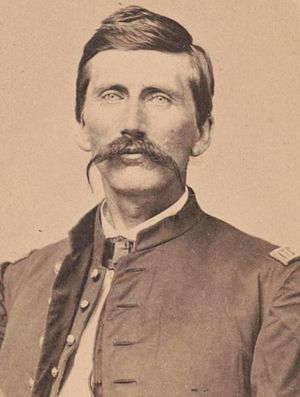Sewall S. Farwell facts for kids
Sewall Spaulding Farwell (born April 26, 1834 – died September 21, 1909) was an important figure in American history. He served as an officer during the American Civil War. Later, he became a Republican U.S. Representative for one term, representing Iowa's 2nd congressional district.
Contents
Early Life and Moving West
Sewall Farwell was born in Keene, Ohio. He went to local schools and an academy in Cleveland, Ohio. In 1852, when he was about 18 years old, he moved to Jones County, Iowa. There, he started working in farming.
Serving in the Civil War
When the American Civil War began, Sewall Farwell joined the Union Army in 1862. He became a captain, leading Company H of the 31st Iowa Volunteer Infantry Regiment. In 1864, he was promoted to major. He bravely served until the war ended.
Major Farwell took part in many important battles. These included the Chickasaw Bayou, Arkansas Post, and the long Siege of Vicksburg. He also fought in battles like Lookout Mountain, Missionary Ridge, and Kennesaw Mountain. He was part of the Atlanta and Jonesboro campaigns. Farwell also marched with General Sherman during the famous Sherman's March to the Sea.
A Career in Politics
After the war, Farwell continued to serve his community. From 1865 to 1869, he was a member of the Iowa Senate. This meant he helped make laws for the state of Iowa.
Later, he worked for the government in different roles. From 1869 to 1873, he was an assessor of internal revenue. This job involved figuring out taxes. Then, from 1875 to 1881, he became a collector of internal revenue, gathering those taxes.
Time in Congress
In September 1880, Sewall Farwell was chosen by the Republican Party to run for Congress. He won the election and became a U.S. Representative. He served in the Forty-seventh Congress from March 4, 1881, to March 3, 1883.
He tried to be re-elected in 1882 but lost to a Democrat named Jeremiah Henry Murphy.
Later Years
After his time in Congress, Sewall Farwell returned to Iowa. He became the president of the Monticello State Bank in Monticello. He passed away in Monticello on September 21, 1909. He was buried in Oakwood Cemetery.


